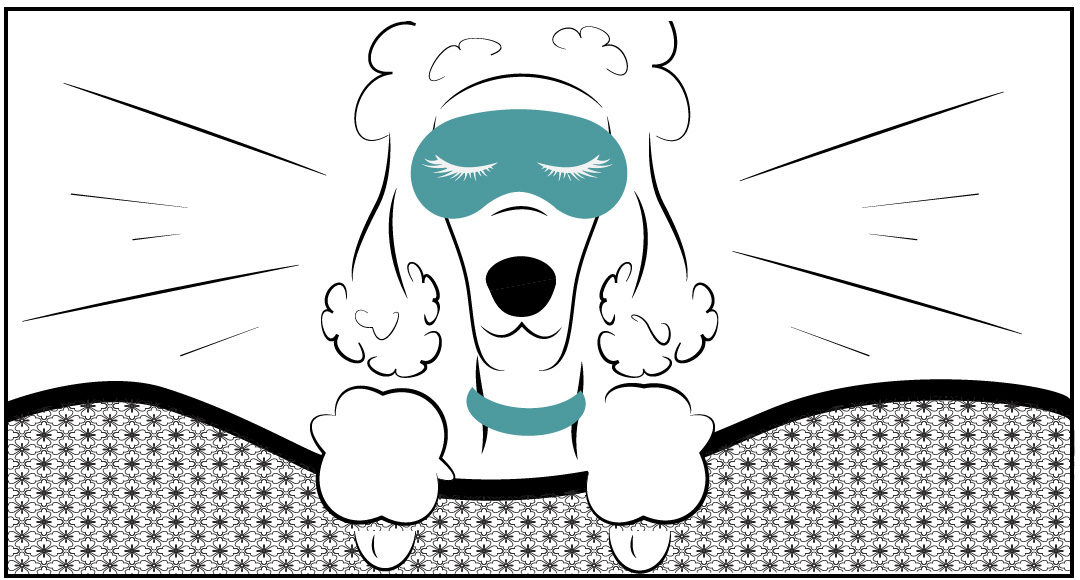Family Pet
After a particularly hard day at work, when you come home to the happy tail wagging and excited greeting of the beloved family pet, how often have you wished for the life of a dog?
Originally, the term “a dog’s life,” was not one to be relished and referred to the hard life of the working dog: sleeping in a damp barn, chasing rats and other intruders, living on scraps, etc. Today, for the most part, the term has acquired a completely opposite connotation, a life of indolence where the individual may do as he or she pleases, just like a pampered dog.
Your Dog’s Life
If you have a dog, take a guess at what he/she is doing right now. Chances are, the answer is sleeping!
While it may seem excessive, sleeping for long periods is a natural part of the canine lifestyle. Dogs tend to spend 50 percent of the day snoozing, 30 percent awake but lying around, and 20 percent being active.
%
SNOOZING
%
LYING AROUND
%
ACTIVE
Sleeping Dogs
The amount of zzz’s your dog needs depends on factors such as:
- Age and size
- Breed and activity level
- Life changes
- Health
Unlike humans who generally stay up all day and then sleep for one long stretch at night, spending as much as 25 percent of their sleep in Rapid Eye Movement (REM) sleep, dogs’ shorter sleep stints mean just about 10 percent of their snoozing is REM. The result is that they need more total sleep in order to log enough of the restorative kind that they need.
On average, dogs spend about 12-to-14 hours of the 24-hour cycle sleeping. Of course, all dogs need sleep, but it tends to be the larger breeds that are known for constant dozing. Puppies, like babies, spend a lot of time exhausting energy while playing and exploring their new surroundings. Because of this, they might need as much as 18-to-20 hours of sleep to recoup! Older dogs need significant amounts of sleep simply because, as they age, living becomes more difficult. They tire out more easily and need rest in order to function properly.
So, it is no surprise that besides proper nutrition and exercise, comfort is a leading factor in a dog’s quality of life.
Think Comfort

Photo Credit: Adam Grabek on Unsplash
One of the first things that owners think about, in terms of comfort, is a place for their dog to lay. You might notice that dogs tend to lay in different areas and on different surfaces during different times of the year. During the heat of the summer, you will often see your dog opting for the coolness of the tile or wood floor. During the winter, they may curl up on the carpet or pick a spot where the sun shines through the window.
During the day, dogs will choose places where they can see and hear what is going on in the world around them. If there is more than one person in the house, your dog may lay in a central location where they can keep an eye on all of the activity areas. However, at night, many dogs prefer to be close to their owner and will often sleep in the bedroom at the foot of the bed. It is at night, when the world is asleep, that a dog will be most relaxed and prefer the comfort of a nice bed. To feel safe, many dogs prefer to sleep off the floor where they cannot be accidentally stepped on or kicked.

Craig A. Ruark
Craig A. Ruark is a freelance writer that provides newsletter and blog content for clients in a variety of industries. In November 2014, he became a contributing writer for the Las Vegas Business Press, producing over 100 in-depth articles on a wide range of subjects from technology, to medical, economics, and local business. He has also written over a dozen profiles on some of Las Vegas’s most prominent individuals.


